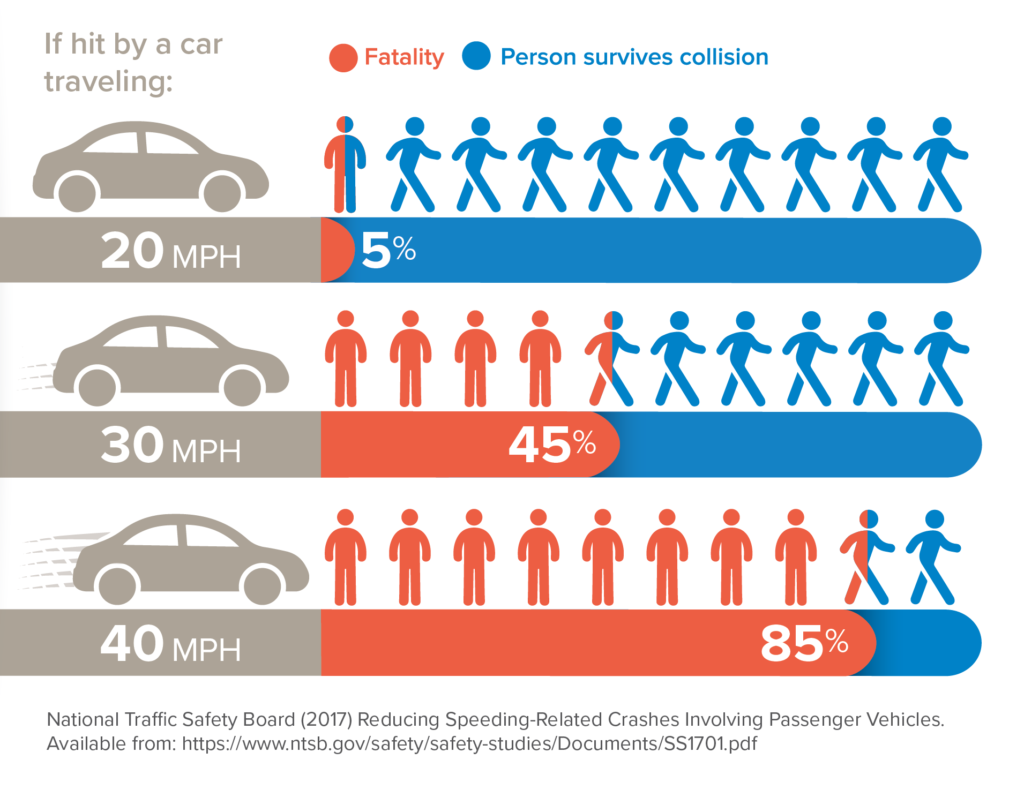Why Complete Streets are important
Improving safety
Increasing bicycling and walking as a percentage of all trips is a state transportation goal. To meet this goal, we must consider and plan for the needs of people walking and biking, who are the most vulnerable from a safety perspective. People often make choices about walking or biking based on their perception of safety. For example, perceived or real traffic-related dangers are common barriers cited by parents for not allowing children to walk school.
We are seeing a larger share of crashes involving people walking and biking that result in fatal and serious injuries in Minnesota. Both speed-related and total fatalities have increased.

There is a significant correlation between vehicle speed in a crash and fatalities for people walking and biking. At 20 miles per hour, there is a 5% fatality rate for people walking from being struck by a car. This fatality rate rises to 85% at 40 miles per hour.
A Complete Streets approach can help:
- calm traffic,
- reduce speeds,
- decrease fatalities,
- reduce injuries from crashes,
- avert costs from medical treatment and the cost of property damage
